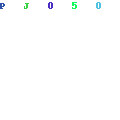Federal Agency’s Checklist for Mold
 The National Institute for Occupational Safety and Health (NIOSH) is conducting a pilot study to establish a standardized checklist for a mold and moisture inspection. This checklist is more designed for building owners and operators rather than for experienced consultants. First let me explain the background of the checklist and how it works, then I’ll later provide some commentary.
The National Institute for Occupational Safety and Health (NIOSH) is conducting a pilot study to establish a standardized checklist for a mold and moisture inspection. This checklist is more designed for building owners and operators rather than for experienced consultants. First let me explain the background of the checklist and how it works, then I’ll later provide some commentary.
Ju-Hyeong Park and Michelle Martin at NIOSH are the developers of this checklist. The pilot project was unveiled at the Federal Interagency Committee on Indoor Air Quality (CIAQ) on October 13, 2010 in Washington DC. The information in this blog post is based on that presentation.
The NIOSH checklist is purely observational. No moisture meters, infrared cameras or other gadgets are required. The checklist includes a scoring system that was developed to quantify the problems discovered. Each room or area in the building is scored, with a zero score being assigned to areas with no problems. All of the following areas in each room get scored:
- Ceiling
- Walls
- Windows
- Floors
- HVAC Systems
- Pipes
- Furnishings
- Supplies and Materials
- Other
Each of these areas in a room gets a score in four separate categories: 1) Damage or Stains 2) Mold Area 3) Mold Thickness 4) Wetness. The scoring is described below:
- Damage or Stains
- None = 0
- <2 ft² = 1
- 2-33 ft² = 2
- > 33 ft² = 3
- Mold Area
- None = 0
- <2 ft² = 1
- 2-33 ft² = 2
- > 33 ft² = 3
- Mold Density
- None = 0
- Mild = 1
- Moderate = 2
- Heavy = 3
- Wet or Damp
- None = 0
- <2 ft² = 1
- 2-33 ft² = 2
- > 33 ft² = 3
The scores for each room are then totaled and tabulated. Having used this scoring system in several buildings, NIOSH has found a statistically significant correlation between symptoms and higher checklist scores. Although the checklist is only a work in progress, this pilot may lead to a standard method for building staff to assess for mold and moisture problems.
Ok, now my commentary…
The Good. This is a good preliminary screening tool for building staff. It would help a building engineer, for example, perform a more thorough assessment. It forces those using the checklist to inspect the key areas in enough detail to provide a score. The checklist is good because it doesn’t only look for mold, but moisture as well. Dampness is a problem even if mold is not yet seen or smelled.
The Bad. The checklist makes something very simple become complex. Does it need to be more complex than this: 1) find mold 2) identify moisture sources 3) fix moisture sources and clean up mold? With the numbering system, building staff may lose sight of the big picture when finding a limited amount of mold. Will they ignore it because the overall score is comparatively low? Instead of training building staff how to use an assessment tool, would it be better to train them how to use a moisture meter? If the building will spend several thousand dollars on remediation, they can afford $500 for a nice moisture meter. Without a moisture meter, the checklist would require staff to touch a moldy area to determine if it’s wet. In most cases, touching moldy areas is a bad idea.
To sum it up, I like the detailed checklist in that it forces staff to perform a thorough assessment. I would like to see moisture meters incorporated into the methodology. Lastly, staff need to be trained that any and all moisture and mold problems should be addressed, no matter what the score.
As I learn more about this new assessment tool, I promise to keep you updated.
UPDATE from 10/25/2010: NIOSH’s presentation describing the checklist can be downloaded by clicking this link: NIOSH Presentation.
[osd_social_media_sharing]

Follow Us!